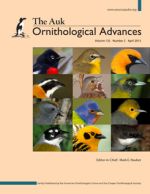The shortening of day lengths is known to advance the late-summer and autumn events of the annual cycle preceding migration in late-hatched individuals in order to synchronize the individual cycles of birds that hatched on different dates. However, little is known about how day length influences behavior during autumn migration. Here, we tested the locomotory activity of first-year migrant Long-tailed Tits (Aegithalos c. caudatus) from northwestern Russia under two different photoperiodic conditions during the autumn migration period. The birds were taken into the experiment after they started their migration in the wild, and assigned to either the control (natural photoperiod) or the experimental group (photoperiod shifted 1 mo ahead to simulate shorter days). In the beginning of the experiment, locomotory activity was the same in both groups. After 3 weeks, however, individuals exposed to the light regime simulating a delay on the migration route (i.e. shorter days) showed higher levels of locomotory activity. This reveals that Long-tailed Tits are photosensitive in October with respect to their migratory behavior, and suggests that migrants may use photoperiod to adjust the speed of migration to their position en route.
How to translate text using browser tools
28 January 2015
Photoperiodic conditions affect the level of locomotory activity during autumn migration in the Long-tailed Tit (Aegithalos c. caudatus)
Julia Bojarinova,
Olga Babushkina
ACCESS THE FULL ARTICLE

The Auk
Vol. 132 • No. 2
April 2015
Vol. 132 • No. 2
April 2015
Aegithalos caudatus
locomotory activity
long-tailed tit
migration
migratory restlessness
photoperiod




